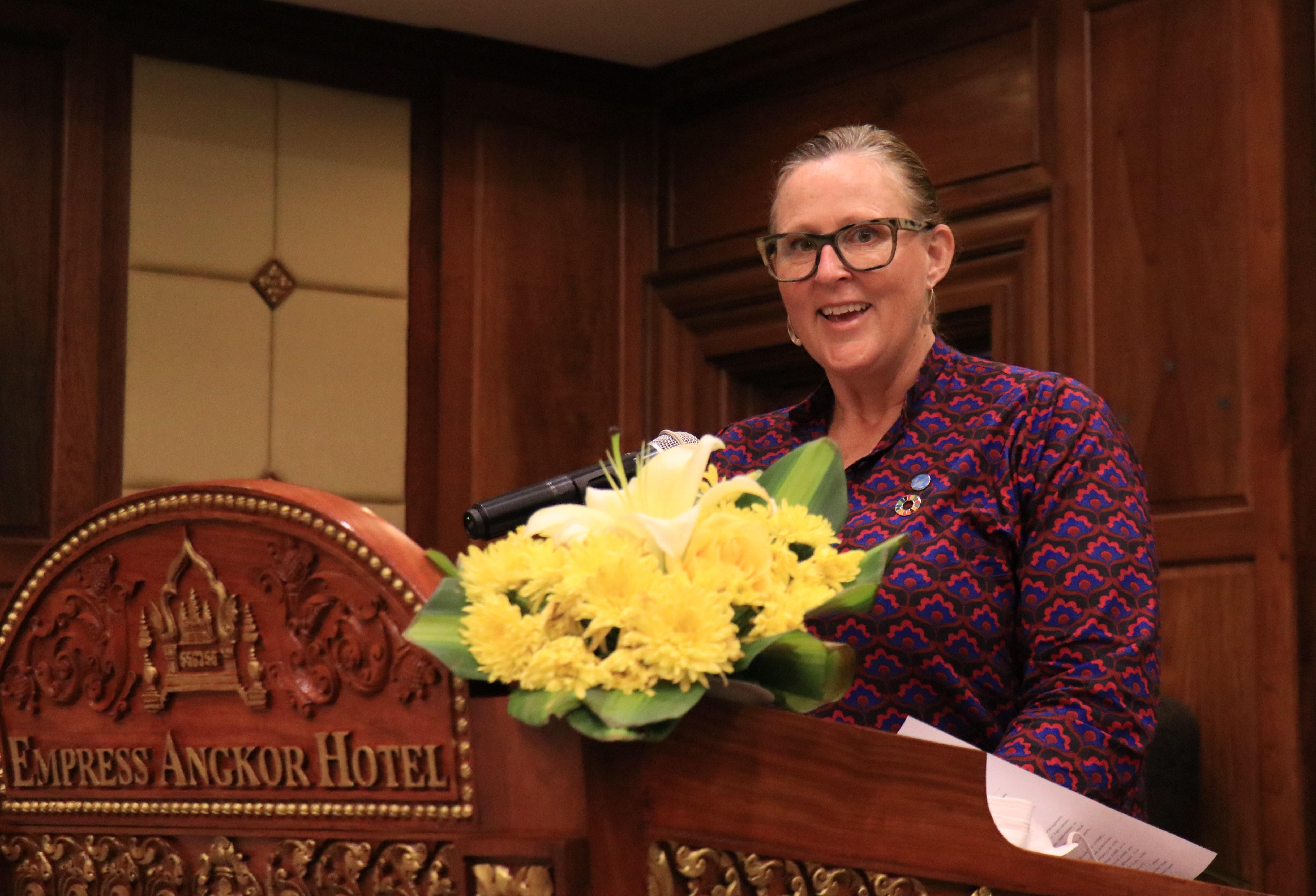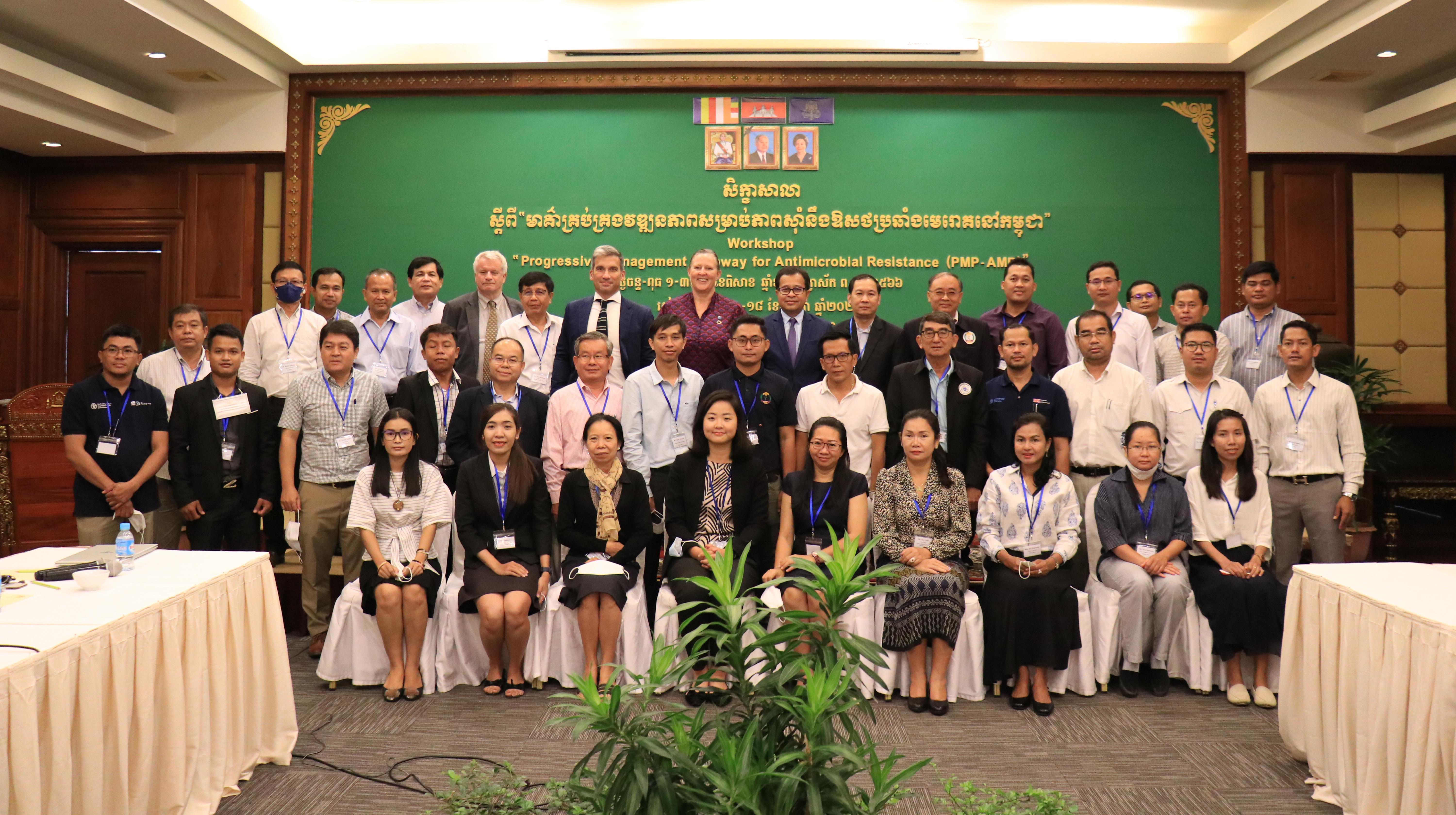Siem Reap (FN), May 18 - Antimicrobial resistance (AMR) is a growing threat that occurs when drugs called antimicrobials including antibiotics, designed to kill microbes – bacteria, viruses, fungi and parasites – lose their effectiveness. When AMR develops, the antimicrobial drugs lose their ability to fight infections, which this lead to treatment failure, deaths and significant economic losses.
Cambodia is actively engaged in adopting the CODEX AMR standards to support the containment and reduction of foodborne antimicrobial resistance. A range of stakeholders concerned with the imminent threat of increasing drug resistance from national and subnational levels, including the government, farmers, academia and the private sector convened a workshop in Siem Reap this week to review the national efforts to contain AMR. The participants reported on the country’s progress in implementing Cambodia’s National Action Plan (NAP) and to identify future priority actions. The workshop was jointly organized by the Ministry of Agriculture Forestry and Fisheries (MAFF) and the Food and Agriculture Organization of the United Nations (FAO), as part of the AMR Codex Texts (ACT) project, which is supported by the Republic of Korea.
This workshop began with a self-assessment exercise using FAO monitoring tool called the Progressive Management Pathway (PMP) for AMR. This tool assesses the status of the action plan that focuses on the food and agriculture sectors along with the Ministry of Health (MoH) and the Ministry of Environment (MoE). In Cambodia, a Multi-sectorial Action Plan on AMR (2019 – 2023) was endorsed by three ministries (Health, Agriculture Forestry and Fisheries, and Environment) in December 2019.
“The results of this assessment are crucial for identifying issues and measures for combating AMR and the use of antimicrobial medicines in the areas of animal health and production and aquaculture, which will contribute to development of agriculture and food safety, thereby leading to improvement of public health in Cambodia,” noted Sar Chetra, deputy general secretary of the Ministry of Agriculture Forestry and Fisheries (MAFF).
Rebekah Bell, representative of FAO in Cambodia explained that, “AMR represents a complex problem, that no single individual, institution, country or region can successfully address alone. That is why having representatives of so many different institutions and organizations together to assess the issue represents a great opportunity to set collective actions to fight against the AMR.”
Thai Savuth, chief of Prevention and Control Bureau, Communicable Disease Control Department, MoH, added that, the MoH plays a key role in combating AMR in human health sector. In the efforts to combat the spread of AMR, he highlighted that, MoH has put in place the AMR monitoring and reporting system, and enhanced the capacity of micro laboratories, while strengthening drug registration to combat counterfeit drug and promoting local use of the AMR data to strengthen antimicrobial stewardship and infection prevention control.
Chou Monydarin, deputy director general, general directorate of Environmental Protection, MoE, reflected a close link between human health and environmental health, emphasizing AMR as a great example. While antimicrobial resistance can develop naturally in the environment the addition of resistant micro-organisms and their resistance genes to soil and water through various routes such as inadequately treated hospital wastewater and agricultural waste can increase the load. This can lead to contamination of the food chain and exposure of humans and animals to resistant microorganisms, some of which may lead to disease.
“AMR is a key priority for the MoE, as it plays crucially important role in ensuring the health of human, animals, plants and the environment,” he noted.
Without concerted actions to control AMR, human deaths are estimated to increase from today’s 700,000 worldwide to 10 million in 2050. Asia is expected to account for half of this projected global mortality. Moreover, according to the World Health Organization AMR will force up to 24 million people into extreme poverty by 2030.
The volume of global real exports may fall below base-case values by 1.1 percent in the low-AMR scenario and by 3.8 percent in the high-AMR scenario by 2050, according to World Bank report. Output and trade in livestock and livestock products are especially vulnerable to AMR impacts. Livestock production in low-income countries would decline the most, with a possible 11 percent loss by 2050 in the high AMR-impact scenario.
Contact: For media enquiries please contact, Tet Chann, communication officer, FAO.
Tel: 011 276 775
Email: chann.tet@fao.org
=FRESH NEWS
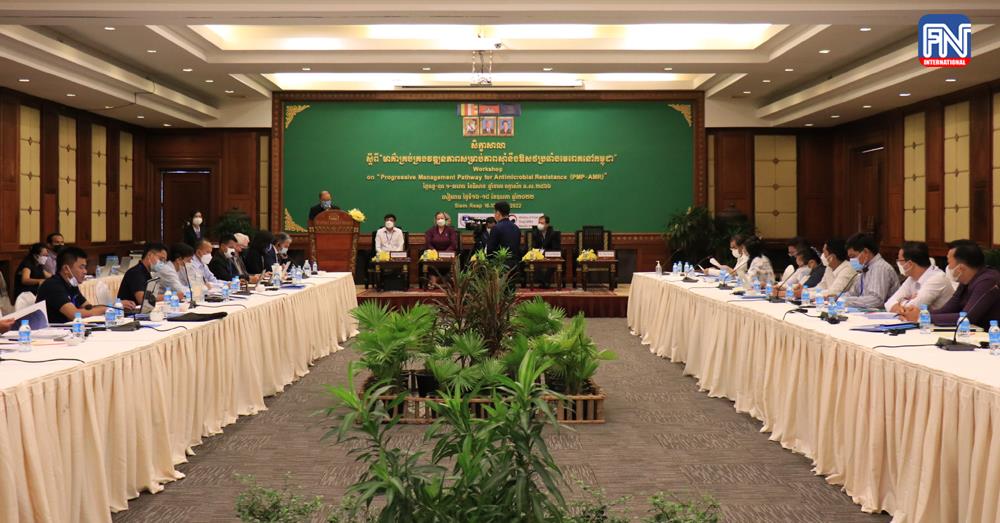
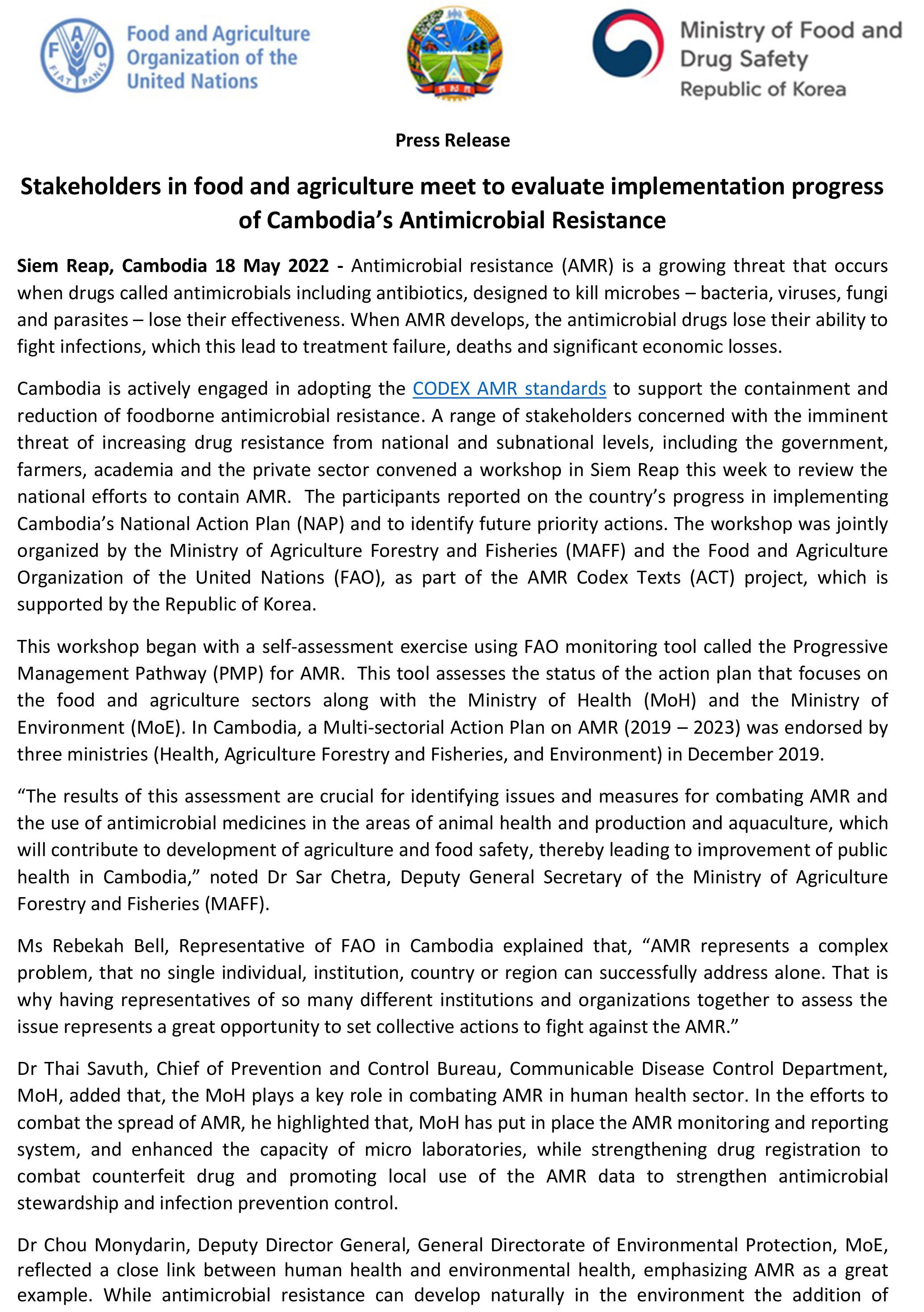
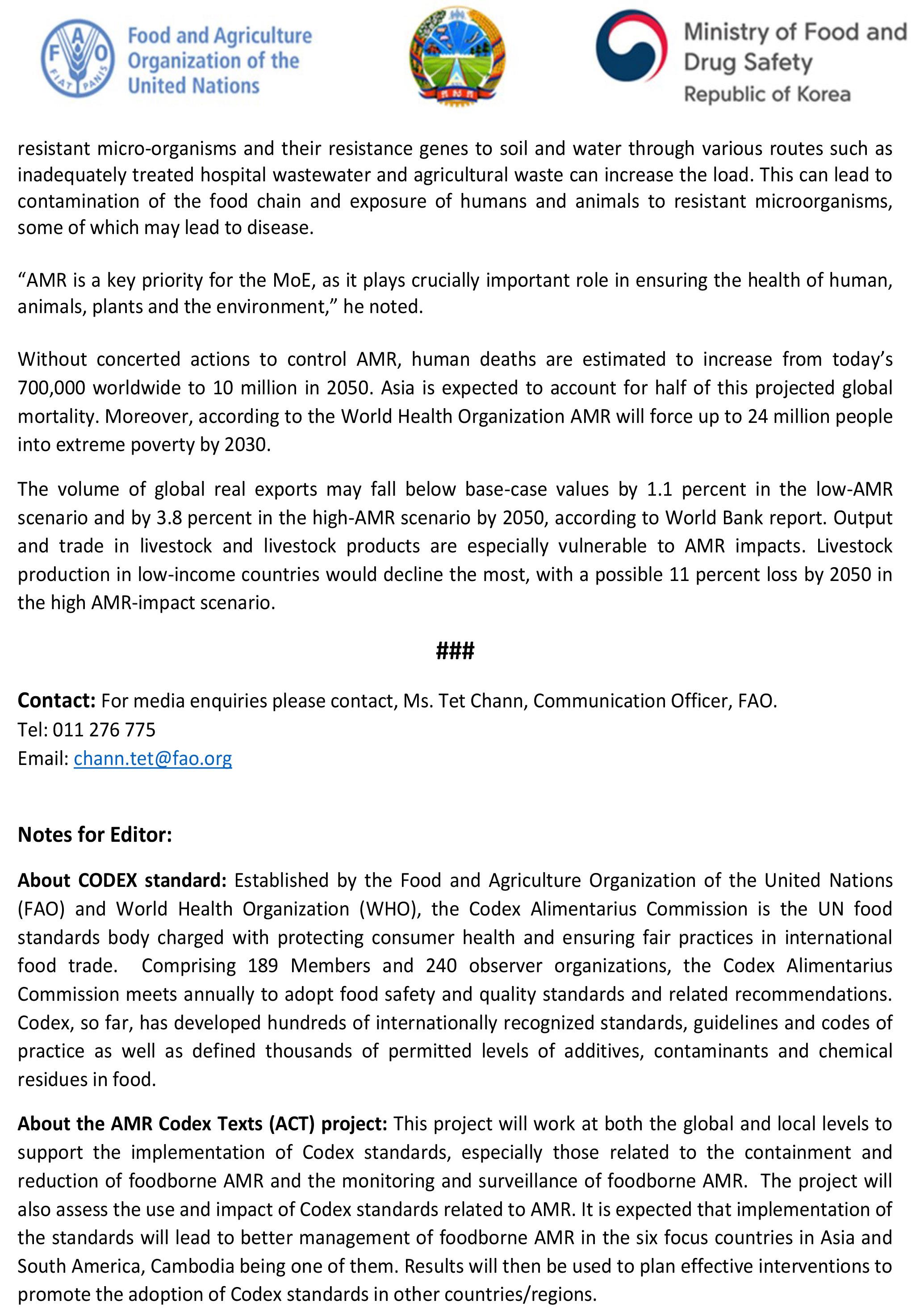
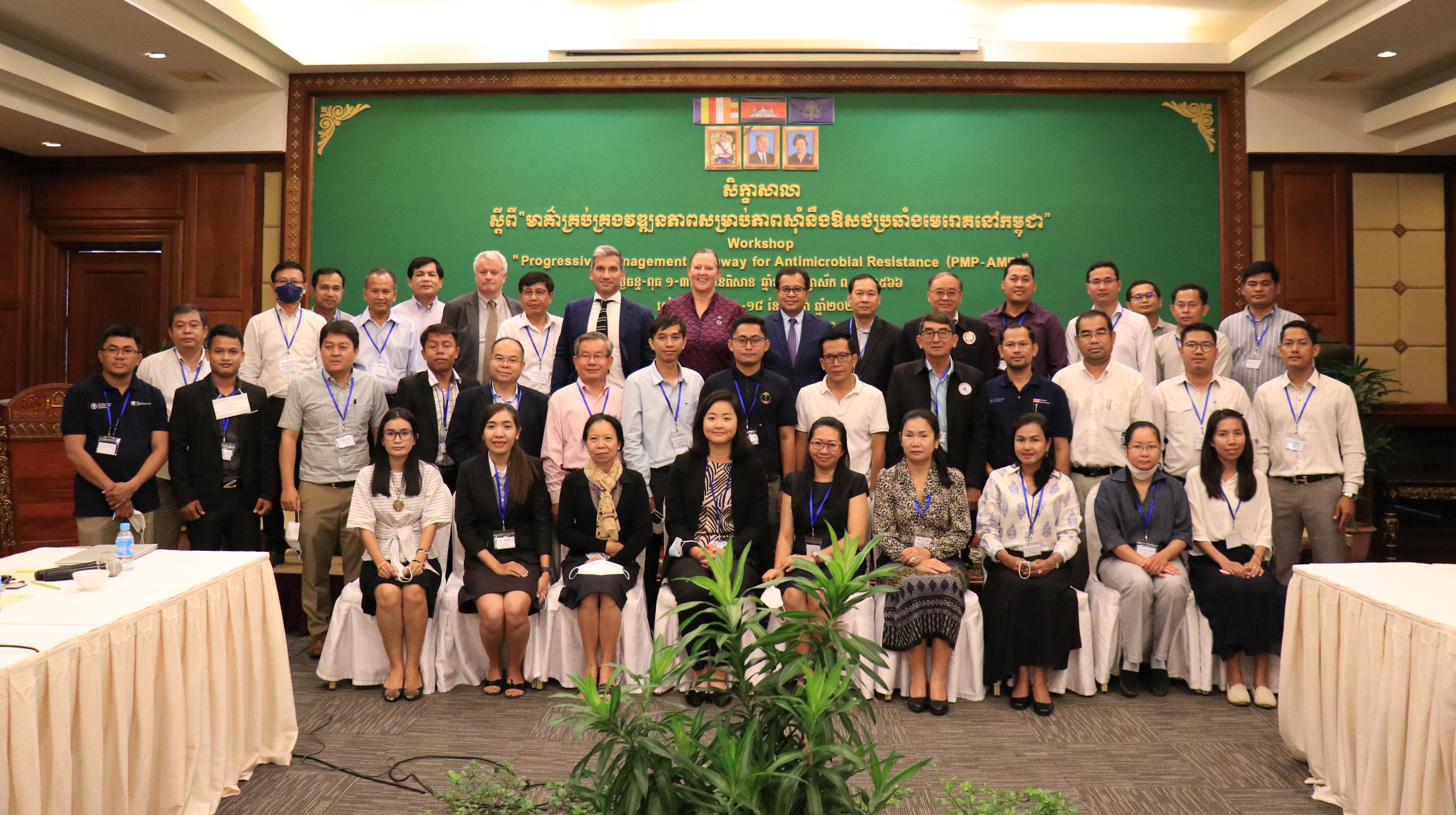
http://image.freshnewsasia.com/2021/id-025/fn-2022-05-18-22-02-58-0.JPG

http://image.freshnewsasia.com/2021/id-025/fn-2022-05-18-22-03-06-1.JPG
